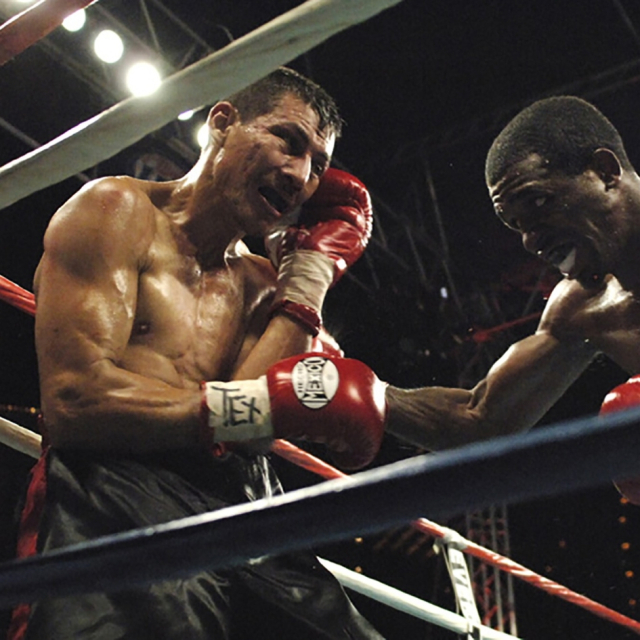Boxing is one of the oldest and most iconic combat sports in the world. With a history dating back thousands of years, this discipline combines physical endurance, strategy and technical skill. Over the centuries, boxing has evolved into a cultural phenomenon, with a significant impact on both society and the sporting arena.
Origins of boxing.
Boxing has deep roots in human history. Engravings depicting fights have been found in Mesopotamia and Egypt, dating back to around 3000 BC. In Ancient Greece, boxing was part of the Olympic Games from 688 BC, known as pugilato . This primitive sport was much more violent than today's and lacked the rules that protect the integrity of fighters today.
The Romans also adopted boxing, incorporating it into gladiatorial combat. However, with the fall of the Roman Empire, the practice lost popularity in Europe for centuries, re-emerging in England during the 17th century, where modern boxing began to take shape. The introduction of the Queensberry Rules in 1867 marked a turning point, establishing rules such as the mandatory use of gloves and time limits on rounds.
Modern boxing.
Boxing as we know it today is divided into two main branches: amateur boxing and professional boxing . Amateur boxing is common in competitions such as the Olympic Games and world championships. Its main purpose is to prepare athletes for a transition to professional boxing or simply to promote the sport as a recreational activity.
Professional boxing, on the other hand, is a multi-billion dollar industry. Professional fights attract global audiences and generate significant revenue through television rights, ticket sales and sponsorships. Organizations such as the World Boxing Council (WBC), the World Boxing Association (WBA) and the International Boxing Federation (IBF) regulate and promote the sport worldwide.
Great figures in boxing history.
Over the years, boxing has produced legendary athletes who not only dominated the sport, but also left a lasting cultural impact. Among them:
Muhammad Ali : Known as The Greatest , Ali is remembered not only for his prowess in the ring, but also for his social and political activism. Fights such as the "Rumble in the Jungle" and the "Thrilla in Manila" are milestones in boxing history.
Mike Tyson : His aggressive style and impressive strength made him the youngest world champion in the heavyweight category at age 20.
Floyd Mayweather Jr .: With an undefeated record, Mayweather is considered one of the best defensive boxers of all time, amassing a multi-million dollar fortune in his career.
Women's boxing has also gained ground, with athletes such as Katie Taylor and Claressa Shields bringing the sport to new audiences and fighting for gender equality in sport.
Basic rules of boxing.
In boxing, two competitors face each other in a ring, wearing padded gloves. The fights are divided into rounds, which usually last three minutes, with one minute of rest between them. The objective is to win by knockout, decision of the judges or disqualification of the opponent.
Boxers are classified by weight classes to ensure fair competition. The referee oversees the fight to ensure that the rules are followed and to protect the physical integrity of the fighters.
Social and cultural impact.
Boxing has been much more than a sport; it has been a vehicle for social change and self-improvement. In many disadvantaged communities, boxing has offered an outlet for young people facing poverty and violence. Boxing gyms in slums have served as centers of discipline, training and hope.
Culturally, boxing has inspired countless works of art, films and books. Movies such as Rocky and Million Dollar Baby have captured the essence of the sport as a metaphor for fighting adversity.
Risks and criticisms of boxing.
Boxing is not without controversy. Risks associated with the sport, such as traumatic brain injuries, have been a recurring topic in medical and ethical debates. Conditions such as chronic traumatic encephalopathy (CTE) have led to calls for improved safety measures and reconsidered fight lengths.
The future of boxing.
Boxing faces challenges in a world where other combat sports, such as mixed martial arts (MMA), are gaining popularity. However, it remains a discipline with a loyal fan base and global appeal. Technology and new competition formats are helping to modernise the sport, attracting new audiences.
Boxing is a discipline that has transcended the barriers of time, culture and social circumstances. Its ability to inspire, entertain and transform lives makes it one of the most significant sports in history. Protecting and promoting this sport, while ensuring the safety and well-being of the athletes, will be key to its sustainability in the future.
References:
